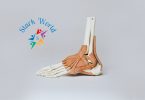In our modern, fast-paced world, stress has become an enduring companion for many individuals. From work-related pressures to personal challenges, stress can easily overwhelm us, impacting our mental well-being. This blog post endeavors to illuminate ten potent techniques that have demonstrated efficacy in alleviating stress and fostering mental health. These methods are straightforward, accessible, and impactful. Join us on this journey toward a healthier and more balanced life.
The Importance of Stress Relief for Mental Health
Stress, in its essence, is our body’s response to external pressure or threats. While short-term stress can be beneficial, helping us to focus and perform under pressure, chronic or long-term stress can lead to severe health problems. Chronic stress has been linked to a range of mental health disorders, including depression, anxiety, and insomnia.
Our immune system can be weakened by it, which in turn makes us more vulnerable to illnesses. Additionally, it can weaken our immune system, rendering us more susceptible to illnesses. Therefore, it becomes imperative to incorporate successful stress-relief techniques into our daily lives to maintain and improve our mental health.
Technique #1: Deep Breathing
Explanation of deep breathing technique
Deep breathing, also known as diaphragmatic breathing, is a powerful stress-relief technique. During periods of stress, our breathing tends to become fast and shallow, further exacerbating feelings of anxiety. Deep breathing counters this by encouraging full oxygen exchange – that is, the beneficial trade of incoming oxygen for outgoing carbon dioxide. This slows the heartbeat, stabilizes blood pressure, and promotes a state of calm.
Step-by-step instructions for practicing deep breathing
- Engaging in deep breathing is a straightforward practice that can be carried out anywhere, at any moment. Here’s how:
- Sit comfortably with your back straight.
- Inhale slowly through your nose, sensing your stomach rise. Your chest should move very little.
- Exhale slowly through your mouth, pushing out as much air as you can while contracting your abdominal muscles. Again, your chest should move only a little.
- Sustain this rhythmic pattern, focusing on your breath and ensuring it stays slow and deep.
Technique #2: Progressive Muscle Relaxation
Explanation of progressive muscle relaxation technique
Progressive Muscle Relaxation (PMR) is a technique that entails tensing and subsequently releasing various muscle groups in the body. This approach proves effective in alleviating overall tension and nurturing a sense of calm, establishing it as a valuable tool for stress relief.
Step-by-step instructions for practicing progressive muscle relaxation
To practice PMR, follow these steps:
- Find a quiet place where you won’t be disturbed.
- Start by tensing the muscles in your toes for about five seconds, then gradually release the tension over 15 seconds.
- Move upwards through your body, repeating the process with your feet, calves, thighs, and so forth, until you reach your head.
- Take a few moments to enjoy the deep sense of relaxation that ensues.
Technique #3: Mindfulness Meditation
Explanation of mindfulness meditation technique
Mindfulness meditation is a mental training practice that entails directing your focus to present-moment experiences, such as emotions, thoughts, and sensations. It’s about acceptance and paying attention to your body without judgment. By practicing mindfulness meditation, you can develop coping mechanisms to deal with stress and anxiety.
Step-by-step instructions for practicing mindfulness meditation
To start practicing mindfulness meditation:
- Find a quiet and comfortable place. Sit in a chair or on the floor with your head, neck, and back in an upright position, maintaining a straight posture without stiffness.
- Try to set aside thoughts of the past and the future, anchoring yourself in the present moment.
- Breathe in through your nose, filling your lungs fully. Exhale slowly through your mouth.
- If your attention wanders, gently guide it back to your breathing. The goal is to be present in the moment, acknowledging it without judgment.
Technique #4: Exercise
benefits of exercise for stress relief
Exercise is a potent stress reliever. It boosts your mood by triggering the release of endorphins, the body’s natural painkillers and mood elevators. Regular physical activity helps lower body tension, improve mood, support good sleep, and boost self-esteem. Whether you prefer a vigorous workout or a calming yoga session, exercise can provide an effective outlet for your frustrations and a healthy distraction from your worries.
Discussion of different types of exercises that can help with stress relief
Various types of exercises offer distinct benefits for stress relief. Aerobic activities such as jogging, swimming, or dancing can effectively reduce anxiety levels and enhance mood. Strength training contributes to a sense of confidence and capability in confronting challenges. Yoga, incorporating physical postures, breathing exercises, and meditation, promotes relaxation. Even low-impact activities, like a leisurely walk in the park, can be beneficial. Select an activity that brings you enjoyment and incorporate it into your routine.
Technique #5: Journaling
Explanation of the therapeutic benefits of journaling
Journaling is another powerful tool for stress relief. It provides a safe space for expressing emotions, exploring thoughts, and reflecting on experiences. By writing down what’s on your mind, you can gain clarity, reduce emotional intensity, and find new perspectives.
Suggestions for journaling prompts and techniques
If you’re new to journaling, you might find it useful to start with prompts like:
- What are three things I’m grateful for today?
- Describe a challenge I faced today and how I handled it.
- What did I learn about myself today?
Just remember, when it comes to journaling, there is no right or wrong way to do it. It’s a personal, private space for you to express yourself freely. The goal is to free up your mind and relieve stress.
Technique #6: Listening to MusicExplanation of the therapeutic benefits of listening to music
Listening to music can serve as a potent stress reliever, offering numerous mental health benefits such as anxiety reduction, mood enhancement, and the promotion of relaxation.
Suggestions for using music for stress relief
- Create a playlist: Compile a collection of songs that you find soothing or uplifting. This can be your go-to playlist when you need to unwind and destress.
- Relaxation music: Look for music specifically designed for relaxation, such as classical music, nature sounds, or ambient music. These types of music can help slow down your heart rate and induce a state of calm.
- Mindful listening: Instead of using music as background noise, try practicing mindful listening.
Final
Keep in mind that everyone’s musical preferences vary, so explore different genres and styles to discover what works best for you. The key is to select music that resonates with you and aids in relaxation and unwinding.







